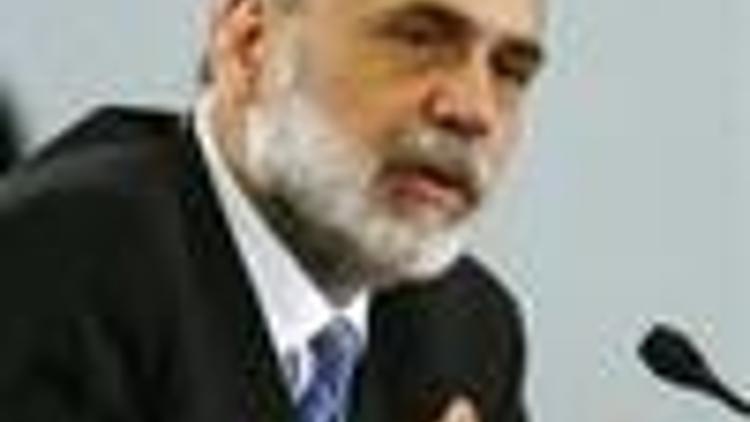Hurriyet English with wires
Oluşturulma Tarihi: Ağustos 05, 2008 16:36
United States Federal Reserve governors met Tuesday to mull interest rates left the benchmark rate on hold at 2.0 percent for a second straight time. (UPDATED)
Fed, caught between a rock and a hard place because a cut in the federal funds rate could spur inflationary pressures while a rate hike could stymie fragile economic growth, left the interest rates unchanged.
"Tight credit conditions, the ongoing housing contraction, and elevated energy prices are likely to weigh on economic growth over the next few quarters," Fed said in a statement.
"Although downside risks to growth remain, the upside risks to inflation are also of significant concern to the Committee. The Committee will continue to monitor economic and financial developments and will act as needed to promote sustainable economic growth and price stability," Fed also said.
The Fed had reduced rates by a cumulative 3.25 percentage points since mid-September in response to a sharp housing retrenchment and turmoil in credit markets.
The Fed underlined that it remains concerned about energy costs even though oil prices have cooled somewhat in recent weeks from record peaks.."Inflation has been high, spurred by earlier increases in the prices of energy and some other commodities, and some indicators of inflation expectations have been elevated," the Fed said.
Oil prices have tumbled around 28 dollars in recent weeks to 119 dollars a barrel Tuesday after striking record peaks above 147 dollars last month.
Central bank policymakers nonetheless voiced optimism that economic growth would rebound going forward in light of its rate-cutting campaign.
The Fed's decision to keep the federal funds rate on hold was widely expected by financial markets.
U.S. shares rallied sharply after the decision, the Dow Jones Industrial Average, which already had posted solid gains, leapt 275.19 points (2.44 percent) to 11,559.34 and the tech-heavy Nasdaq composite was up 39.12 points (1.71 percent) at 2,324.68 around 1820 GMT.
The broad-market Standard & Poors 500 index advanced 24.57 points (1.97 percent) to 1,273.58.
STILL SHAKY
The Fed's decision comes as evidence points to lingering economic weakness from the housing slump, shaky consumer sentiment and tight credit.
The drop in oil prices had led investors to anticipate the Fed would not need to raise rates soon to combat inflation at the expense of choking off already weak growth, and was a factor pushing equities prices up ahead of the central bank's decision.
�
The economy grew at respectable if somewhat subdued 1.9 percent annual rate in the April-June quarter, but that growth followed a 0.2 percent contraction in the fourth quarter of last year and a tepid 0.9 percent gain at the start of 2008.
�
Many economists expect the economy to weaken anew in the second half of the year as the boost to consumer spending from government stimulus checks recedes.
�
With the jobless rate at a four-year high and employers cutting jobs for a seventh straight month in July, many observers suggest it is a technicality to insist the economy is not in recession simply because a popular definition -- two consecutive quarters of contraction -- has not been met.
At the heart of U.S. economic malaise is a housing market that has not shown convincing signs of stabilizing. The pace of existing home sales fell to the lowest level since 1998 in June and mortgage applications are at their lowest level since 2000 as buyers remain on the sidelines.
�
Fed officials have worried that big increases in energy and food prices could set in train an inflationary psychology in which workers and businesses push harder to cover their costs, leading to a broader pickup in prices.
�
A report on Monday showed inflation jumped 0.8 percent in June, the steepest rise since 1981. The gain over the past year climbed to 4.1 percent, the most since 1991.
�
While so-called core inflation, which excludes volatile food and energy prices and is viewed by the Fed as a good barometer of the future course of prices, has been better behaved, it also moved up in June.
�
Core prices have risen 2.3 percent over the past year, a bit above the 1.5 percent to 2 percent range that many Fed officials believe is ideal.


